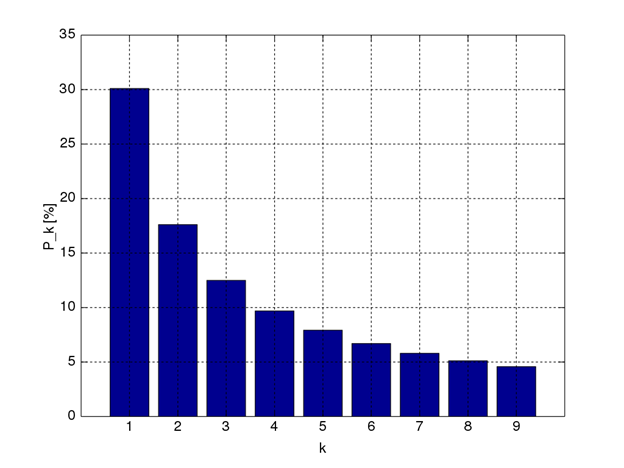Likely, you have never heard of Benford’s Law, but we can guarantee that it has impacted your daily life in more ways than you can ever realize. The principles of the law have been baked into auditing practices, accounting systems, and yes, even healthcare platforms. But, what is it?
Benford’s Law, also known as the “First-Digit Law,” is a mathematical principle that states that in many naturally occurring datasets, the leading digits of numerical values are not uniformly distributed but follow a specific pattern. The pattern is pretty straight forward; 1’s will occur more than 2’s, which will occur more than 3’s, etc. See the chart for the normal distribution of digits under the law.

Although Benford’s Law has found applications in various fields, including finance and forensic accounting, its application in healthcare can provide valuable insights and aid in detecting anomalies or irregularities. Here are a few examples of how Benford’s Law can be applied in the healthcare sector:
Fraud Detection: Benford’s Law can be used to identify potential fraud or irregularities in healthcare billing and claims data. Since fraudulent data often deviate from the expected distribution of leading digits, analyzing healthcare billing records and claims using Benford’s Law can help identify suspicious patterns that may indicate fraudulent activities.
Revenue Analysis: Healthcare organizations can utilize Benford’s Law to analyze their revenue streams. By examining the distribution of leading digits in financial data such as revenue figures, organizations can identify discrepancies, inconsistencies, or potential errors in financial reporting. This can help ensure accurate financial records and improve financial management.
Population Health Data: The law can also be applied to analyze population health data, such as mortality rates, disease incidence, or health outcomes. By examining the leading digits of these data sets, researchers can identify unexpected patterns or anomalies that may warrant further investigation. Deviations from the expected distribution may indicate data quality issues or errors in reporting.
Clinical Research and Trials: Benford’s Law can be applied to analyze numerical data collected during clinical trials or research studies. By examining the leading digits of measurements, such as patient vital signs, laboratory values, or treatment outcomes, researchers can assess data quality, identify potential errors, and detect any suspicious patterns that may require additional scrutiny.
Public Health Surveillance: This concept can also aid in public health surveillance by analyzing health-related data sets, such as disease incidence or mortality data. By applying Benford’s Law to such data, public health agencies can detect potential data anomalies, reporting errors, or even identify areas of concern where further investigation or intervention may be necessary.
It is important to note that while Benford’s Law can be a useful tool in identifying potential irregularities or anomalies, it should not be solely relied upon as definitive evidence of fraud or errors. It serves as an initial screening tool that can help guide further investigation and analysis. Other factors and methods should be considered to validate any findings and draw appropriate conclusions.
LW Consulting, Inc. (LWCI) offers a comprehensive range of services that can assist your organization in maintaining compliance, identifying trends, providing education and training, or conducting documentation and coding audits. For more information, contact LWCI to connect with one of our experts!


